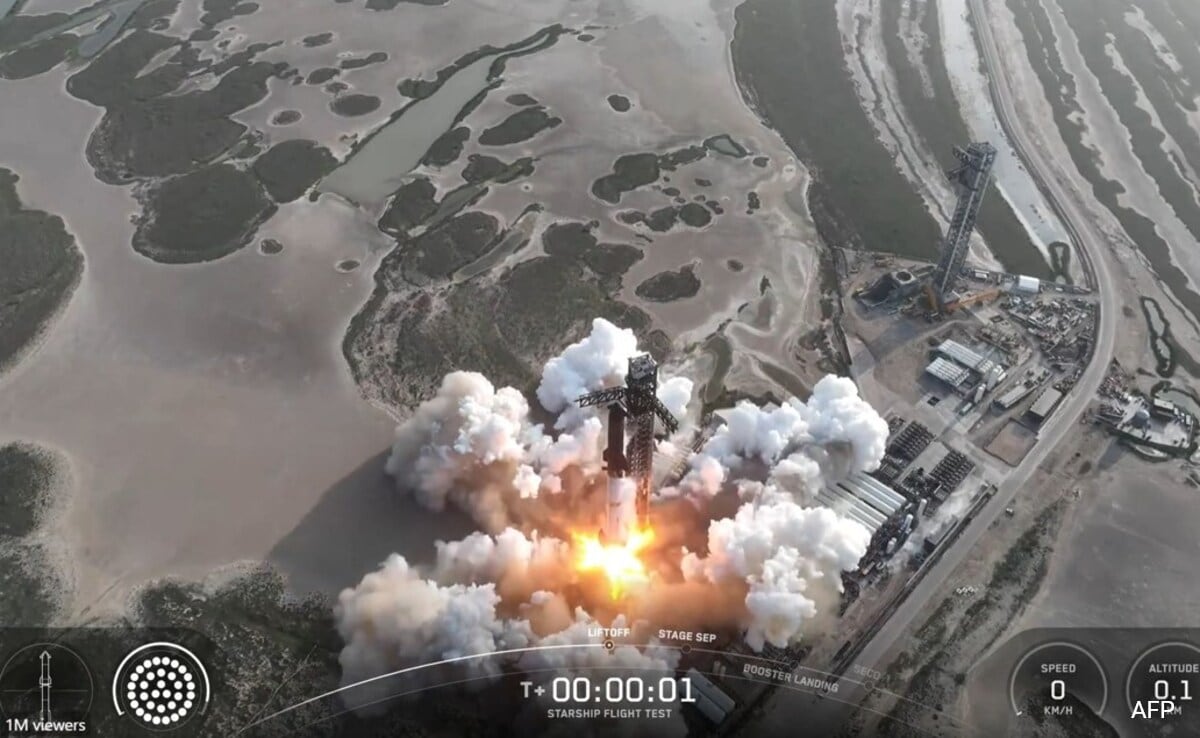
Signs of trouble started emerging soon, with the first-stage Super Heavy booster blowing up instead of executing its planned splashdown in the Gulf of Mexico.
Washington:Starship, the futuristic SpaceX prototype rocket on which billionaire Elon Musk's ambitions for multiplanetary travel are riding, flew farther than the last two attempts but ultimately exploded over the Indian Ocean on Tuesday, capping another bumpy test flight. The two-stage spacecraft-- the biggest and most powerful launch vehicle ever built-- lifted off around 6:36 pm (local time) from SpaceX's Starbase launch site on the Gulf Coast of Texas near Brownsville.
A live SpaceX webcast of the liftoff showed the rocket rising from the launch tower, billowing clouds of exhaust and water vapour. However, signs of trouble started emerging soon, with the first-stage Super Heavy booster blowing up instead of executing its planned splashdown in the Gulf of Mexico.
The upper-stage Starship vehicle, however, continued to climb to space, reaching its planned suborbital trajectory about nine minutes into the flight. But then the live feed showed Starship's payload doors failed to open in order to release a group of simulated satellites.
🚨🇺🇸 SUPER HEAVY'S HARD SPLASHDOWN—SPACEX PUSHES LIMITS AND LOSES BOOSTER (AS PLANNED)
— Mario Nawfal (@MarioNawfal) May 27, 2025
Super Heavy did its job and hit the ocean as expected, with SpaceX confirming the booster's “demise” after a loss of contact just before touchdown.
Only 13 engines reignited—two with… https://t.co/46fr2VK3Cd pic.twitter.com/AippJfnCQY






.jpg)
0 Comments